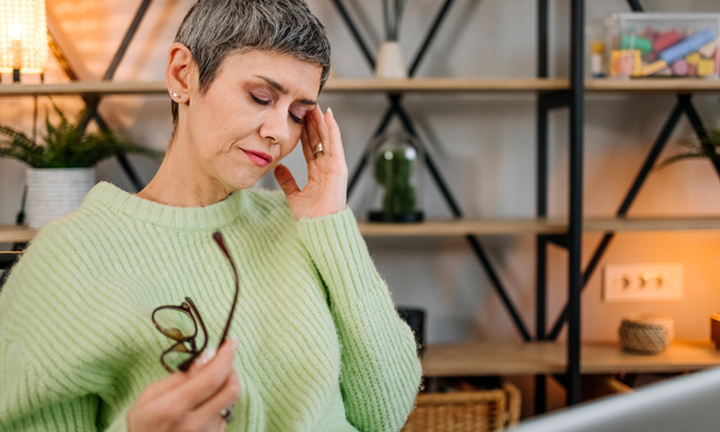Baby Aria is approaching her first birthday. In her first twelve months of her life, Aria’s eye color has changed three different times. Her mother has vibrant green eyes and her father’s eyes have always been dark brown, so why was she born with bright blue eyes that changed slowly to slate-gray and finally to a happy hazel eye color?
Aria, like nearly half of the babies born in the US, is Caucasian. With light skin, light hair and light eyes, she was born with low levels of melanin, or pigmentation. Once she entered the world, the natural light boosted the melanin levels in her irises and an eye color change slowly began to occur.
Let’s take a closer look at this amazing process that causes a baby's eye color to change.
What Is Melanin’s Role in Eye Color?
Melanin is the dark pigment occurring in the hair and the iris of the eye. Melanin is responsible for getting a tan, freckling, and the changing of a person's hair and eye color. Caucasian babies are born with barely any melanin, resulting in light blue eyes and cream-colored skin. The more the baby is exposed to sunlight, the more melanin levels will rise, resulting in the changing of eye, hair and even skin color.
It should be noted that there are three different types of melanin; eumelanin, pheomelanin, and neuromelanin. Eumelanin is the type of melanin responsible for skin color, and its only “colors” are brown and black. There is no such thing as green, blue, hazel or gray pigmentation. These colors are simply determined by the amount of melanin in the body. The more melanin a blue-eyed baby has, the more brown is flecked through the blue, making the color slightly darker, perhaps greener. Add more melanin and the eyes will change again, maybe into a rich hazel. Add more melanin and those hazel eyes might transition into a mossy brown; and so on and so forth.
Babies with Asian, Hispanic or African-American parents are typically born with pre-determined, high levels of melanin, producing dark features like tan skin, deep brown eyes and ebony hair. Because the pigment is already present, these features are likely to go unchanged.
When Will My Baby's Eye Color Change?
Though some babies’ eye color changes rapidly with the onset of melanin, most infants' eye color undergoes changes between six and nine months of age according to the Dean McGee Eye Institute. This phenomenal occurrence happens once the iris has stored enough pigment to influence subtle changes like blue to gray, green to hazel, hazel to brown and so on.
Although this change will likely last through the early stages of childhood, there is a possibility that you could experience changes in eye color even into adulthood.
Can I Tell What My Baby's Final Eye Color Will Be?
Though the ultimate color of your baby’s eyes is hard to detect, a good indicator of the potential color comes from the DNA makeup of you – the parents – as well as the grandparents. If you and your partner both have brown eyes, but your baby has green, it might be a genetic tie to one of your parents. However, by their first birthday, most babies will have reached their permanent eye color.
How Can I Better Care For My Baby’s Eyes?
Although you may think your baby doesn’t have eye or vision problems, the American Optometric Association recommends parents schedule their baby’s first eye assessment around 6 months of age. While infant eye issues are uncommon, it’s smart to eliminate any potential problems early on. Like many health problems, vision and eye development issues are easier to detect and correct with early treatment.
There are many options and programs that help to make infant eye care manageable. For starters, the AOA foundation manages a public health program called InfantSEE. This program is designed to ensure essential, quality care for infant’s eye and vision wellness. At no charge to you, participating optometrists complete a full eye assessment on babies between 6 and 12 months of age.
The American Academy of Pediatrics, the American Academy of Family Physicians, and the American Association for Pediatric Ophthalmology recommend simply asking your child’s primary care physician to screen for vision problems. This is typically included in a well-child visit and, in the event a problem were to become evident, a visit to a practicing optometrist would then be necessary.
Lastly, observing your baby’s eyes between checkups can further ensure healthy vision. Know your family’s vision history; have there been genetic issues in the past? If so, make sure to notify your baby’s physician. Also, regularly test your child’s vision by having him or her focus on a certain object as you move it to different positions (2-3 months). It may even be necessary to make regular visits to an eye doctor. No matter what you decide, make sure your baby’s eyelids aren’t droopy, goopy, or uneven and keep an eye out for sensitivity to foods, light, etc.
Save On Dental and Vision Insurance With VSP Individual Vision Plans
With a VSP® Individual Vision Plan you purchase on your own you can save each year on vision costs, from eye exams to eyeglasses and contact lenses. Learn more about your vision insurance plan options today. Once you’ve completed your vision plan enrollment, keep your eyes open for dental insurance plan options from Guardian Direct®. Get the care your eyes and smile both need!
Information received through VSP Individual Vision Plans’ social media channels is for informational purposes only and does not constitute medical advice, medical recommendations, diagnosis or treatment. Always seek the advice of your physician or other qualified health provider with any questions you may have regarding a medical condition.
Your vision. Your way.
Not covered for vision? Get an individual plan, customized for you – including where you want to use it: at the doctor, in a retail location, or even online.
.jpg)
Choosing the Best Eyeglasses for Your Face
Are you tired of spending hours at the eye doctor’s office trying to determine which pair of glasses look best on you? You’re not alone....

7 Common Eye Problems: How to Protect Your Eyes
Eye Health: Understanding Common Eye Problems Our vision is like our window to the world, allowing us to see the beauty around us. Our eyes, like a...

The Top Foods and Nutrients to Help Your Vision
Goals are typically filled with resolutions tied to health and wellness. This year, your goal to a healthy body can include your vision. According t...

